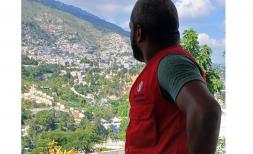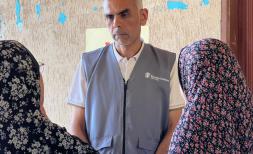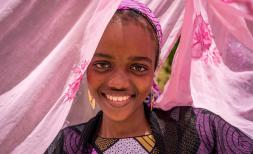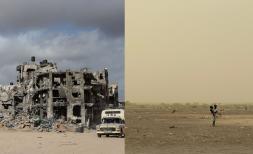9 million people die every year from conditions that should be addressed by their health system. What can be done to change this?
Imagine a world, where essential health and nutrition services are accessible to all. This is one of the core asks of Save the Children. It is also the key focus of the Global Financing Facility for Women, Children and Adolescents (GFF)*, which is committed to ensuring all women, children and adolescents can survive and thrive. This is now more than ever an imperative mandate - given recent data by the Lancet estimating that 9 million people every year die from conditions that should be addressed by their health system.
Today, the GFF will hold its resource mobilisation event, to raise USD 1.2 billion so Save the Children calls on governments, the private sector, and other stakeholders to sustainably and adequately fund the fight for reproductive, maternal, newborn child and adolescent health (RMNCA-H) worldwide – today and in the future. This will help countries save an additional 5 million lives by 2025.
But why do we have to care? And why should governments and multilateral global health institutions?
Even before Covid-19, we were far off from reaching access to health for all. However, Covid-19, the effects of the climate crisis, such as droughts and floods, and protracted conflicts are further weaking already fragile health systems. Many countries are not able to respond to these challenges while continuing to deliver essential health and nutrition services.
Access to essential health services for women, children and adolescents fell by around 25% during the first year of Covid-19 in 36 of GFF’s partner countries.
This calls for increased domestic investments into health and nutrition services by governments worldwide.
In addition, it also calls for external support by government donors to fill the health financing gap.
But trends are moving in the opposite direction. Development aid of many major government donors in 2022 is deflating and risks to do so even further in the coming years. This is reducing the available development aid funding for global health.

What does this mean for children?
Children will bear the brunt of these crises, with those most impacted by inequalities and discrimination including migrants, refugees, and internally displaced people being affected the most. Overall, in 2020, 23 million children did not receive basic immunisations against life-threatening diseases such as pneumonia, meningitis, and polio.
In addition, every year, 100 million people worldwide face catastrophic health expenditures because they pay for health and nutrition services out of their own pockets. This reduction in parental income impacts their child’s likelihood to survive and thrive.
Strong and resilient health systems are key to leave no one behind
As we’ve seen during the COVID-19 pandemic, strong and resilient health systems are key to ensuring no one is left behind in accessing quality health and nutrition services. On top of helping end preventable deaths of new-born babies, children, and mothers, strengthening health systems, especially the primary health care (PHC) structures, will also improve countries’ ability to prepare and respond to future emergencies.
To assess what can be done to further strengthen health systems and progress towards achieving universal health coverage, Save the Children has issued the report ‘Strengthening Health Systems to Achieve Universal Health Coverage - A glance at donors' and the 3Gs' support for better essential services for women, children and adolescents’.
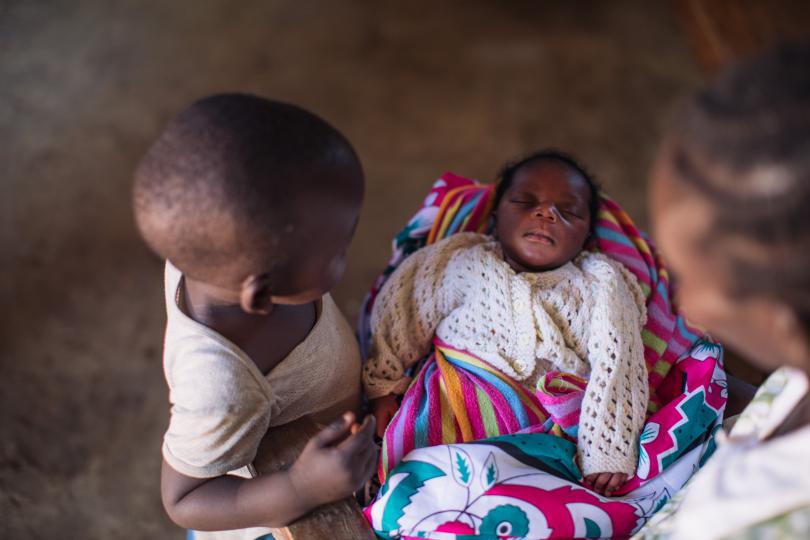
Here are some of the key recommendations to donors and key global health institutions such as the GFF, Gavi, the Vaccine Alliance and The Global Fund – otherwise called the 3Gs - to ensure health for all becomes a reality:
Funding
Donor governments should:
Maintain or ideally increase contributions to the 3Gs. Use upcoming replenishment meetings to include discussions of how each of the 3Gs will work with countries to strengthen health systems worldwide. Donors should encourage and enable the 3Gs to coordinate their work better at country level.
Reach 0.7% development aid target (or go beyond)*. More bilateral development aid for health systems strengthening should go to the least developed countries, especially sub-Saharan African – the region with the highest child mortality. Bilateral development aid should be especially targeting basic health systems.
Enhancing health systems strengthening in the work of global health institutions
The 3Gs should:
Prioritise stronger community systems within the PHC level, and an integrated delivery of services. This is necessary to provide essential health services to the groups most impacted by inequalities and discrimination, including children and adolescents – especially those affected by conflict.
Support countries to increase their domestic resources - to invest in health and nutrition and to reduce out-of-pocket payments. The 3Gs have the responsibility to make sure they leave a stronger health system and health financing architecture in the countries they support; by catalysing sustainable domestic resource mobilisation, and focusing specifically on eliminating out of pocket expenditure on health and nutrition. Improved financing structures are needed to strengthen health systems that can deliver primary health care services to reach all children, as part of building UHC.
Increase collaboration between the 3Gs to harmonise health plans and resources at the country level. The 3Gs should improve coordination between themselves as well as with donors together to support (not undermine) national health system strengthening efforts and priorities, towards UHC. Only then can health systems be strengthened holistically and sustainably.
Click here to read the full publication.
Although the worst of the COVID-19 pandemic may be behind us, health systems have not recovered from the associated demands and pressures. Now isn’t the time to divert our attentions elsewhere but to maintain a focus on global health and strengthening health systems to ensure everyone’s health care needs are met without undue hardship.
* The Global Financing Facility for Women, Children and Adolescents (GFF) is a multi-stakeholder partnership housed at the World Bank. Launched in July 2015, the GFF aims to improve health and nutrition outcomes for women, children and adolescents by strengthening health financing and primary care systems. To date, the GFF has directly invested US$815.5 million in grants to 36 countries from a dedicated multi-donor trust fund – the GFF Trust Fund.
*In 1970, many economically advanced countries agreed to give 0.7% of their gross national income as official international development aid. Most of these countries have failed to reach this goal so far.
